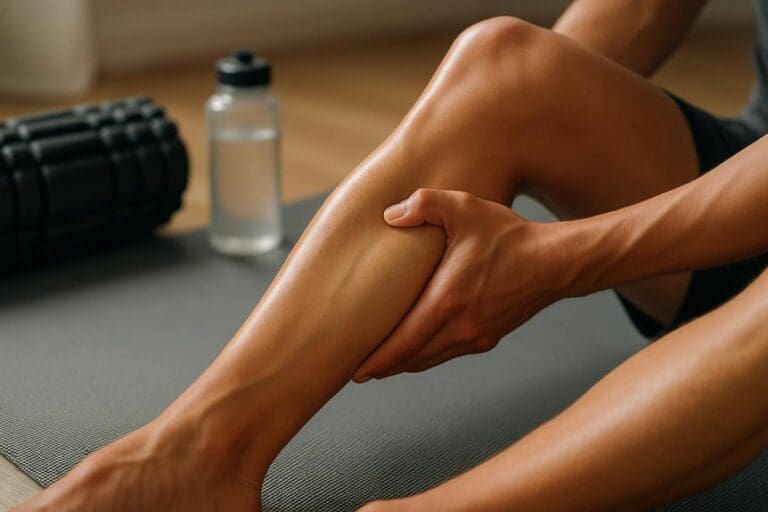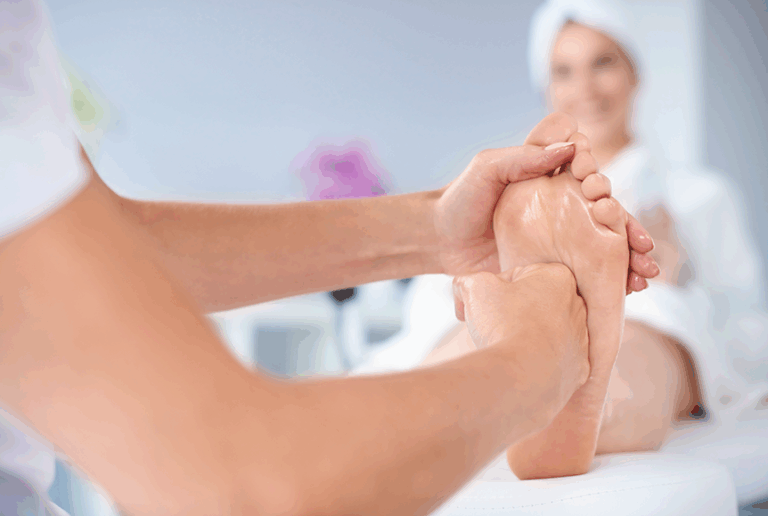After a performance massage, a minimum rest period of 24 hours before vigorous exercise is generally advised to facilitate neuromuscular recovery, tissue adaptation, and clearance of metabolic waste. Immediate quiet rest for at least 10–15 minutes post-treatment is also recommended to stabilize circulation and support cellular repair processes. Individual factors such as massage intensity, tissue response, and overall health may necessitate longer recovery for ideal outcome. Further information can illuminate tailored aftercare strategies and signs requiring additional rest.
Understanding This Technique and Its Effects
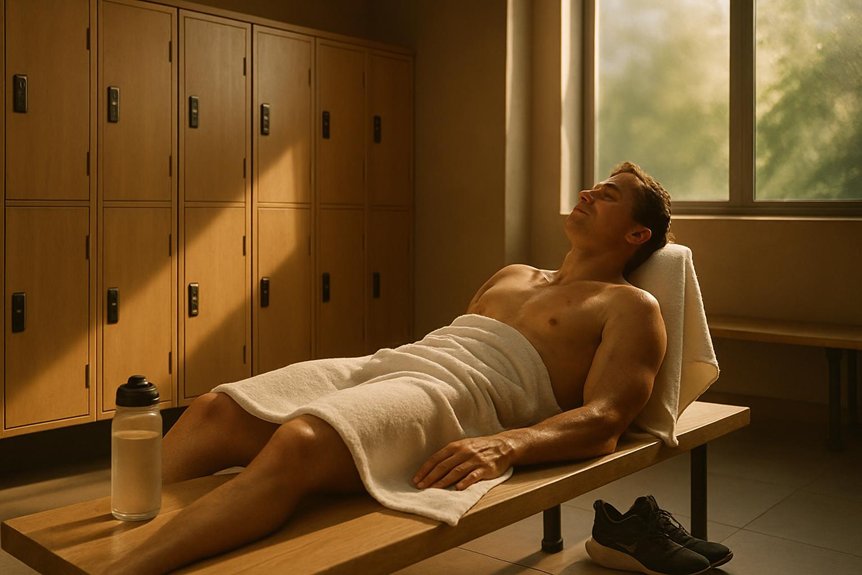
Sports massage, as practiced at Spa & Massage, exerts targeted mechanical pressure on myofascial tissues, promoting increased local circulation and enhanced venous return. This manipulation facilitates the removal of metabolic waste products—such as lactic acid—from muscle fibers, reducing post-exercise soreness and inflammation.
Through precise techniques, therapists stimulate mechanoreceptors in the skin and fascia, modulating neural excitability and decreasing muscle hypertonicity. Moreover, this massage can improve lymphatic drainage, thereby supporting immune function and reducing localized edema.
Evidence suggests that such interventions may also lower sympathetic nervous system activity, fostering a state of relaxation and aiding recovery.
At Spa & Massage, therapists tailor each session to the client’s musculoskeletal needs, ensuring the most effective functional outcomes and well-being.
Similar to targeted soft tissue therapy, reflexology is another therapeutic approach that helps promote healing and balance within the body.
Immediate Post-Massage Rest: What to Expect
Immediately following a massage session, individuals may experience localized warmth, mild soreness, or transient fatigue as muscle fibers undergo neuromuscular relaxation and increased circulation.
Spa & Massage therapists advise a rest period of at least 15–30 minutes post-session to facilitate *best* tissue recovery and metabolic waste clearance.
This immediate rest interval supports the physiological benefits achieved during treatment and minimizes the risk of delayed onset muscle discomfort.
Normal Sensations After Massage
Following a massage, clients often experience a range of physiological sensations during the immediate rest period. Common responses include localized warmth, erythema, and mild muscle tenderness—outcomes of enhanced peripheral circulation and mechanical stimulation of soft tissues.
The sensation of heaviness or muscular fatigue may emerge as lactic acid and metabolic byproducts are mobilized from myofascial structures. Some individuals notice heightened proprioceptive awareness or subtle tingling, reflecting neuromuscular recalibration.
At Spa & Massage, therapists advise clients to recognize these effects as typical signs of tissue recovery and circulatory adjustment. Transient soreness or a feeling of lightness are also frequently reported.
These responses generally resolve within several hours, signaling that the body is adapting to therapeutic intervention and beginning its restorative processes at a cellular level.
Recommended Rest Duration
As the acute physiological responses to this massage subside, the period of immediate post-massage rest assumes clinical significance in facilitating tissue recovery and neuromuscular adaptation. At Spa & Massage, therapists advise clients to rest quietly for at least 10–15 minutes following treatment.
This interval allows for normalization of circulatory dynamics, stabilization of autonomic nervous system activity, and ideal absorption of metabolic byproducts mobilized during massage. Clients may experience transient muscular heaviness or subtle proprioceptive shifts; these are expected as local tissues recalibrate.
Avoiding vigorous activity or intense stretching during this window further supports the restoration of myofascial integrity. Our clinical experience demonstrates that this focused rest enhances the therapeutic benefits of this massage, promoting both physical recovery and the subjective sense of post-treatment well-being.
Ideal Rest Periods Before Returning to Exercise
How long should an individual wait before resuming physical activity after having a massage? Evidence-based protocols recommend a rest period of at least 24 hours before engaging in vigorous exercise.
This interval allows for preferable neuromuscular recovery and adaptation following deep tissue manipulation, which often induces transient microtrauma, increased local circulation, and metabolic waste mobilization.
At Spa & Massage, therapists advise clients to honour this anatomical restoration phase to maximize therapeutic benefits and minimize the risk of delayed onset muscle soreness or strain.
Lighter activities, such as walking or gentle stretching, may be performed sooner if there is no discomfort.
Ultimately, respecting this rest window supports tissue healing, enhances flexibility, and promotes parasympathetic nervous system dominance—key elements in the holistic approach practiced within Spa & Massage clinics.
Factors That Influence Recovery Time
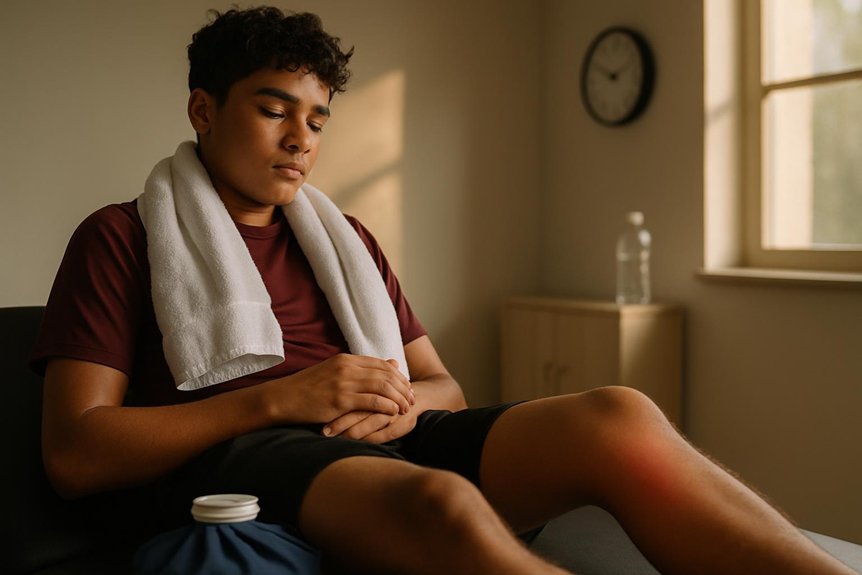
Recovery time following a athletic recovery massage is modulated by variables such as the intensity and pressure applied during treatment, the individual’s physiological response, and their baseline physical activity levels.
Variations in tissue manipulation can influence post-massage muscle soreness and vascular response, while each client’s unique musculoskeletal and metabolic characteristics affect how quickly homeostasis is restored.
At Spa & Massage, therapists assess these factors to optimize aftercare recommendations and support efficient recovery.
Massage Intensity and Pressure
Although this massage is designed to address muscular tension and promote recovery, the intensity and pressure applied during treatment are critical determinants of post-session outcomes. Higher levels of deep tissue manipulation—often utilized at Spa & Massage clinics—target underlying fascia and muscle fibers, leading to microtrauma and localized inflammation.
This physiological response can require additional rest to allow for cellular repair and the resolution of residual soreness. Conversely, moderate pressure may facilitate faster return to activity by enhancing circulation and lymphatic drainage without provoking significant tissue disruption.
Therapists at Spa & Massage carefully calibrate pressure based on anatomical needs, aiming to optimize therapeutic benefit while minimizing excessive strain. Clients are encouraged to communicate preferences, ensuring the massage intensity aligns with their recovery goals and comfort thresholds.
Individual Body Response
Beyond the modulation of massage intensity and pressure, recovery time following a massage session is substantially shaped by individual physiological variability. Each person’s musculoskeletal architecture, connective tissue elasticity, and baseline metabolic rate influence post-massage tissue adaptation.
At Spa & Massage, therapists routinely observe that clients with greater myofascial flexibility or robust lymphatic circulation often experience reduced soreness and swifter restoration of homeostasis.
Conversely, heightened neuromuscular sensitivity or a predisposition to delayed-onset muscle soreness (DOMS) can prolong recovery intervals.
Age-related factors, hydration status, and pre-existing microtrauma further modulate tissue repair kinetics.
Our approach always considers these nuanced anatomical differences, ensuring aftercare guidance is intimately tailored. This bespoke attention facilitates both most favorable recovery and a deeply personal therapeutic experience for every client we serve.
Physical Activity Levels
Because habitual physical activity induces adaptive musculoskeletal and metabolic changes, an individual’s baseline activity level plays a significant role in this massage recovery kinetics.
Highly active clients typically exhibit increased capillarisation, enhanced mitochondrial density, and more efficient lymphatic drainage, all of which support expedited clearance of metabolic byproducts post-massage.
Conversely, individuals with lower physical activity levels may experience slower tissue perfusion and prolonged local inflammation, lengthening the optimal rest period after treatment.
At Spa & Massage clinics, therapists assess a client’s regular exercise routine to tailor post-massage recommendations.
Those accustomed to vigorous physical exertion may resume moderate activity sooner, while less active individuals benefit from extended rest to maximise tissue repair.
This nuanced approach ensures recovery protocols align with each client’s unique physiological baseline and wellness goals.
Recognising Signs Your Body Needs More Time
Following a session, physiological responses such as delayed onset muscle soreness, residual tension, or persistent fatigue may indicate that the body requires extended recovery.
Musculoskeletal discomfort, localised inflammation, or reduced range of motion can signal that underlying tissues—such as muscle fibres, fascia, or tendons—are still undergoing reparative processes.
At Spa & Massage, therapists observe that heightened sensitivity, joint stiffness, and a lack of neuromuscular coordination are reliable markers of insufficient recovery time.
When these symptoms persist, it suggests the body’s homeostatic balance has not fully returned, and premature exertion may risk exacerbation or delayed healing.
Monitoring subtle cues—such as swelling, increased warmth in tissue, or compromised proprioception—enables individuals to respect the unique recovery timeline their bodies require after therapeutic intervention.
Aftercare Recommendations From Our Therapists
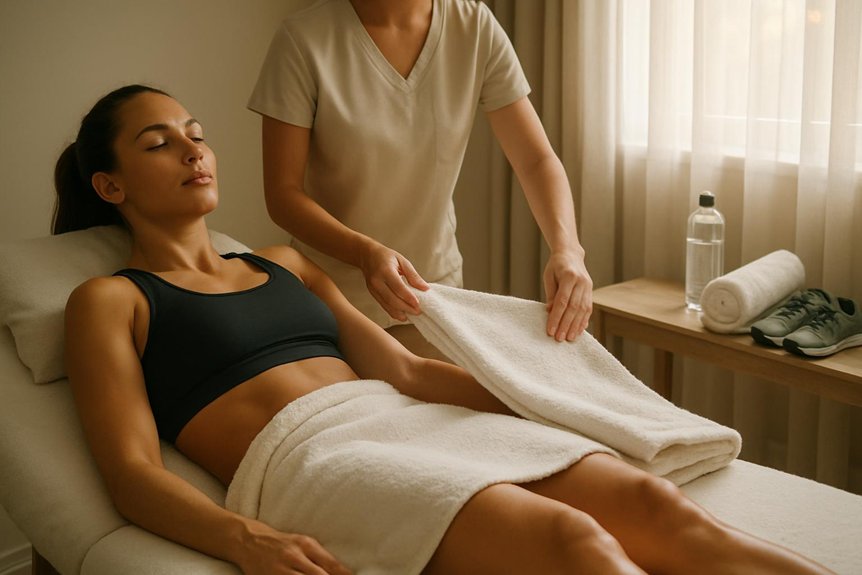
While the immediate effects of performance massage facilitate myofascial release and circulatory enhancement, ideal recovery relies on targeted aftercare strategies to support tissue repair and neuromuscular adaptation.
Spa & Massage therapists recommend gentle passive stretching to maintain optimal muscle length and flexibility post-session. Hydration is emphasised to assist metabolic waste clearance, enhancing lymphatic drainage initiated during massage.
Application of local cryotherapy or warm compresses may be suggested to modulate inflammatory responses, depending on individual tissue reactivity.
Clients are advised to refrain from intense physical activity for 24–48 hours, allowing sarcomere realignment and microtrauma repair.
Attention to proprioceptive feedback—such as lingering tenderness or fatigue—guides the resumption of regular training.
These evidence-based guidelines ensure the physiological benefits of athletic recovery massage are preserved and integrated harmoniously.
Maximising Recovery and Performance Benefits
Effective aftercare protocols lay the groundwork for optimising the physiological outcomes of this massage, yet the true potential for recovery and enhanced performance lies in strategic integration of post-massage interventions.
At Spa & Massage, therapists recommend a graduated return to activity, allowing neuromuscular adaptations and fascial release to stabilise.
Hydration is prioritised to facilitate lymphatic drainage and metabolic waste removal.
Gentle mobility exercises, such as dynamic stretching, are introduced to reinforce tissue pliability and joint integrity.
Nutritional support—especially protein intake—supports microtrauma repair at the myofibrillar level.
Clients are advised to monitor for delayed-onset muscle soreness and adapt training accordingly.
Conclusion
By listening to physiological cues, by respecting individual variability, and by adhering to evidence-based aftercare, clients can optimise recovery after a massage. Allowing muscular tissues to adapt, allowing circulation to normalise, and allowing neural pathways to recalibrate are all integral to maximising therapeutic outcomes. Through careful observation, through gradual return to activity, and through professional guidance, individuals will not only safeguard tissue integrity but also enhance overall musculoskeletal performance for future endeavours.
